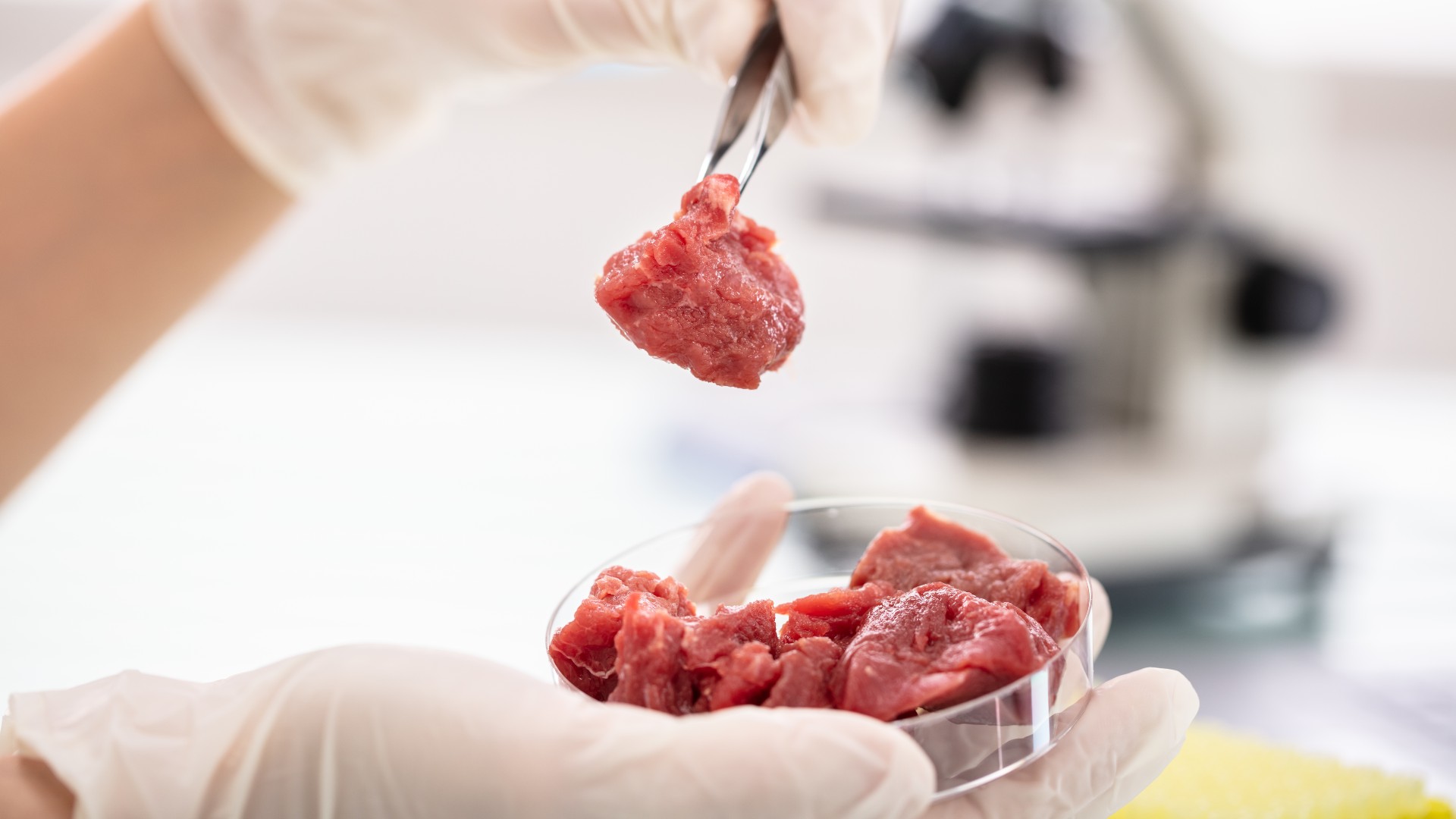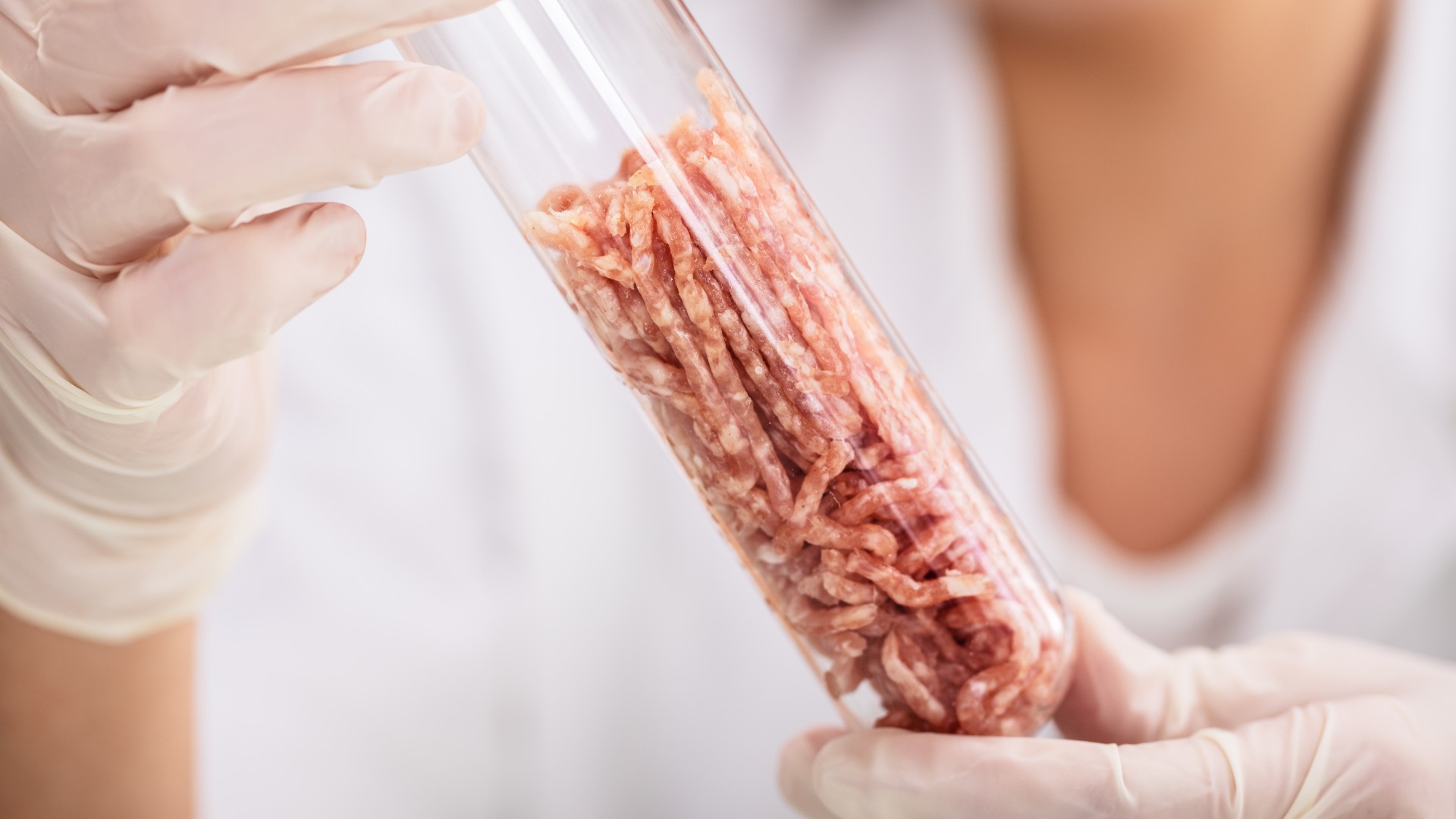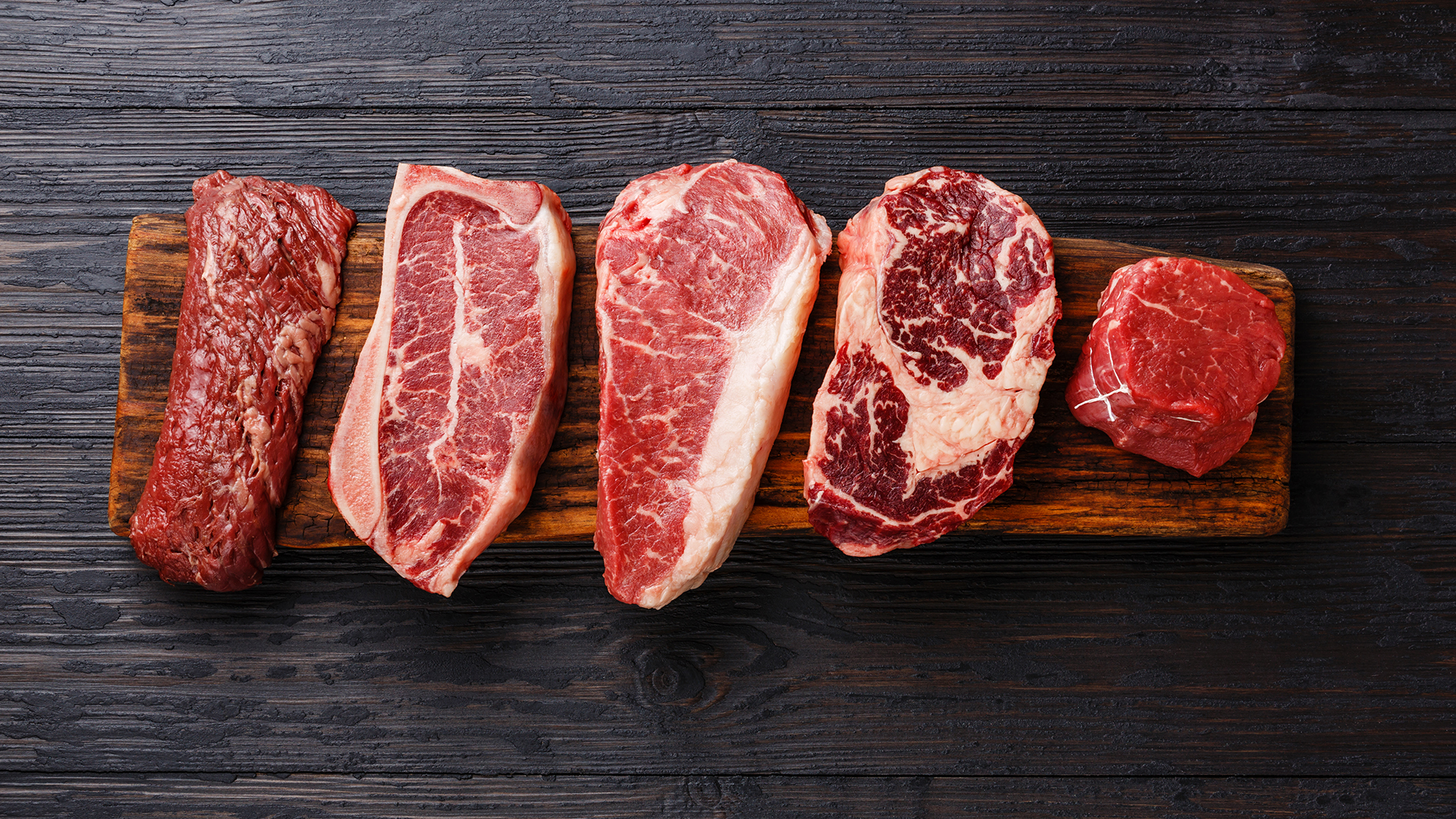Lab-grown meat: How it's made, sustainability and nutrition
Lab-grown meat is a genetically engineered product that uses biotechnology. But is it healthier than meat reared from livestock?

Lab-grown meat, which can also be referred to as cultivated or cultured meat, is real meat that's grown directly from animal cells.
According to Eric Schuzle, the vice-president of product and regulation at UPSIDE Foods, these products are “real meat, made without the need to raise and slaughter animals.”
Cultivated meat may sound like a thing of the future, but it’s closer to reaching supermarket shelves than you might think. In fact, the first piece of lab-grown meat hit the world stage in 2013 when a team at the University of Maastricht presented the first hamburger produced by bovine stem cells. At the time, this original burger cost more than $300,000 to create. But researchers found that two years later, they were able to reduce the cost to $11.36.
According to the United Nations Food and Agriculture Organization, the world population will surpass 9.1 billion by 2050, at which point agricultural systems will not be able to supply enough food to feed everyone. But could lab-grown meat help fill this void? Here’s what we know so far.
How is lab-grown meat made?
According to researchers in the Journal of Integrative Agriculture, lab-grown meat is made by using the more-than-100-year-old technique of in vitro muscle tissue growth.
“The process of making cultivated meat is similar to brewing beer, in that this is an industrial cell culture process based upon well-hewn fermentation technology,” says Schuzle. “However, instead of growing yeast or bacteria, we grow animal cells. We start by taking a small amount of cells from high-quality livestock animals, like a cow or chicken, and then figure out which of those cells have the ability to multiply and form delicious meat food products.
“From there, we put the cells in a clean-and-controlled environment and provide them with the essential nutrients they need to naturally replicate and mature. In essence, we can recreate the conditions that naturally exist inside an animal’s body so that the cells can continue growing. Once the meat is ready, we harvest it, process it like conventional meat products, and then package, cook or otherwise prepare it for consumption.”
Schuzle adds: “We’re excited about this as a new way to produce meat because our cells can continue growing many times over as compared to those in the animal. In effect, we can grow many animals from the cells of just one animal for many years to come.”

Is lab-grown meat more sustainable?
Rearing livestock comes with a huge environmental impact. In fact, the Food and Agriculture Organization of the United Nations says that the total emissions from global livestock represented 14.5% of all greenhouse gas emissions (GHG), with cattle raised for beef and milk accounting for around 65% of the livestock sector’s emissions.
Then there’s land and water use to consider. Research states the production of one kilogram of beef requires 15,414 liters of water on average, while nearly 80% of the world’s agricultural land is used for beef production, according to an article published by the University of Oxford’s Our World in Data.
Improved GHG emission efficiency has been proposed as one of the biggest potential advantages of cultured meat compared with conventional livestock systems. However, this is still a matter of controversy. According to a 2019 study in the Journal of Scientific Research, “replacing conventionally produced meat with cultured meat could potentially help mitigate greenhouse gas emissions, because instead of using larger land for the necessary agricultural crops required for livestock farming, large areas could be released and redeveloped or used for other purposes, such as carbon capture.”

And a 2011 comparative study in the Environmental Science & Technology journal agreed, stating: “In comparison to conventionally produced European meat, cultured meat involves approximately 7%-45% lower energy use, 78%-96% lower GHG emissions, 99% lower land use, and 82%-96% lower water use depending on the product compared.”
However, a 2020 research article, which contrasted the temperature impact of beef cattle and cultured meat production at all times up to 1,000 years in the future, believes the jury is still out on whether lab-grown meat can provide a more “climatically sustainable alternative”.
The researchers concluded: “The climate impacts of cultured meat production will depend on what level of decarbonized energy generation can be achieved, and the specific environmental footprints of production. There is a need for detailed and transparent life cycle assessments of real cultured meat production systems. Based on currently available data, cultured production does not necessarily give license for unrestrained meat consumption.”
Is lab-grown meat healthier?
When lab-grown meat reaches the shelves, it could be healthier than meat reared from livestock. According to researchers in the Journal of Scientific Research, “this is due to the capability of the technology to modify the profile of essential amino acids and fats, and to be enriched in vitamins, minerals and bioactive compounds.”
Grace Derocha, national spokesperson for The Academy of Nutrition and Dietetics, agrees. “More research needs to be done, but it could be healthier in the long run,” she says. “The control factor comes into play, meaning the lab-grown meat would be created in a sterile environment versus concentrated animal feeding operations.
“There are fewer antibiotics and environmental impacts in lab-grown meats. Moreover, the future could have science altering and controlling the amount of fat or reducing cholesterol or even adding in heart-healthier fats instead, such as omega-3 fats, that usually come from fatty fish.”

Is lab-grown meat vegan?
Technically, lab-grown meat isn’t vegan. For a product to be classed as suitable for a vegan diet, it must not contain animal products or by-products and it can’t be tested on animals. And, as we’ve detailed, lab-grown meat is created by growing animal cells taken from high-quality livestock animals.
When will lab-grown meat become available?
As of September 2022, according to the US Food and Drug Administration (FDA) there are no current food products made from cultured animal cells available to buy on the US market. But that’s not to say there won’t be in the near future.
A spokesperson from the FDA says: “Manufacturers are generally working on scaling up their processes to consistently produce amounts large enough to be competitively priced.”
Manufacturers will also have to make sure their cultivated meat meets a stringent list of criteria, to get their product placed on supermarket shelves. The spokesperson explains: “As these products come closer to the US market, we are closely coordinating with the US Department of Agriculture (USDA)'s Food Safety and Inspection Service (FSIS), which shares jurisdiction with the FDA over certain of these products. Human food products made with cultured animal cells must meet the same stringent requirements, including safety requirements and accurate labeling, as all other food products regulated by the FDA and the USDA-FSIS.”
The FDA confirmed that it is already engaged in discussion with multiple firms for various types of cultured cell food products, including those made from cultured seafood cells.
This article is for informational purposes only and is not meant to offer medical or dietary advice.
Sign up for the Live Science daily newsletter now
Get the world’s most fascinating discoveries delivered straight to your inbox.
Becks is a freelance journalist and writer writing for a range of titles including Stylist, The Independent and LiveScience covering lifestyle topics such as health and fitness, homes and food. She also ghostwrites for a number of Physiotherapists and Osteopaths. When she’s not reading or writing, you’ll find her in the gym, learning new techniques and perfecting her form.











